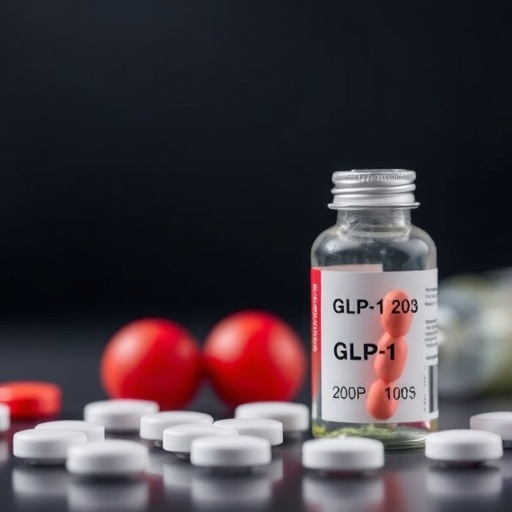Potato late blight, a devastating disease caused by the oomycete pathogen Phytophthora infestans, has historically wrought catastrophic damage, most infamously triggering the Irish potato famine in the mid-19th century. Despite advances in agriculture, late blight remains a persistent global threat to potato cultivation and food security, challenging scientists and breeders to develop durable resistance. Recent research has now harnessed the power of comparative genomics across the Solanum section Petota, the tuber-bearing clade that includes both wild and cultivated potatoes, unveiling a comprehensive “NLRome” that promises to revolutionize resistance breeding strategies.
At the core of plant immune responses lie resistance (R) genes frequently encoding nucleotide-binding leucine-rich repeat proteins (NLRs). These molecular sentinels can recognize pathogen effectors and activate defense mechanisms. However, P. infestans has continually evolved to evade existing R genes, necessitating new approaches that can outpace this pathogen’s rapid adaptation. To address this, an international team assembled an extensive dataset from 52 potato genomes—comprising 31 wild species and 21 cultivated varieties—to construct a panoramic view of the NLR repertoire across the section Petota.
The resulting “NLRome” encompasses over 39,000 NLR genes, providing an unprecedented resource that highlights the evolutionary trajectories and structural diversity of these immune receptors. Among the sequenced genomes were seven wild species notable for their potent late blight resistance, underscoring the untapped potential residing in wild germplasm reservoirs. Through phylogenomic analyses, the study distinguished between sensor NLRs—those responsible for effector recognition—and helper NLRs involved in downstream signaling. The asymmetrical evolutionary patterns observed between these two NLR subclasses hint at sophisticated modularity in plant immune systems.
Mining this rich genetic landscape led researchers to clone novel R genes with promising resistance properties. Notably, they isolated Rpi-cph1, a homolog related to one previously identified only in American black nightshade, a distantly related species. Additionally, Rpi-cjm1 was characterized as a Toll/interleukin-1 receptor (TIR) domain-containing NLR capable of conferring highly specific resistance to late blight. This discovery expands the toolkit of genetically encoded immunity, moving beyond classical nucleotide-binding domain architectures.
A particularly groundbreaking aspect of this research was the identification and characterization of non-canonical integrated domains within NLR proteins. Many of these domains serve as decoys or bait for pathogen effectors, a strategy known as integrated decoy or integrated sensor. By tracing the evolutionary history of these insertions, the team identified Rpi-brk1, an R gene featuring a heavy-metal-associated (HMA) domain that directly perceives a corresponding P. infestans effector. This domain architecture exemplifies an elegant evolutionary arms race where plants co-opt functional domains to trap pathogen molecules.
Harnessing this insight, the researchers demonstrated that incorporating the HMA domain into the well-studied potato NLR R1 effectively broadened its resistance spectrum against multiple P. infestans strains. This innovative “plug-in” strategy offers a novel framework for engineering NLRs by modular domain swapping, paving the way for rational design of resistance genes tailored to evolving pathogen populations. This approach transcends traditional breeding and transgenic methods by leveraging natural evolutionary principles encoded within the plant immune repertoire.
The comprehensive NLRome thus establishes a paradigm shift in R gene discovery and utilization. By synergizing comparative genomics with functional validation, this work not only uncovers previously unknown NLR variants but also illuminates structural variation enabling enhanced pathogen detection. Such insights provide breeders with refined molecular targets to develop next-generation hybrid potatoes combining durable multilayered disease resistance with agronomically desirable traits.
Beyond its direct impact on potato late blight resistance, the conceptual advances made here extend to broader plant pathology and immunity fields. The plug-in domain engineering concept could be applied across diverse crops and pathogen systems, potentially transforming how we approach sustainable disease management worldwide. This strategy aligns with integrated pest management philosophies and genomic-assisted breeding techniques that strive to reduce chemical inputs and environmental impacts.
Moreover, the study exemplifies the power of evolutionary and phylogenomic frameworks in dissecting complex gene families. It underscores the importance of conserving and exploring wild relatives of crop species, which harbor invaluable genetic diversity often lost during domestication. As climate change and pathogen pressures intensify, unlocking this natural genetic reservoir will be crucial for food security and resilient agricultural systems.
The multidisciplinary approach combining genomics, evolutionary biology, molecular genetics, and plant pathology showcased here is emblematic of contemporary efforts to solve entrenched agricultural challenges. By marrying deep data-driven analyses with innovative genetic engineering strategies, the research opens new avenues for precision breeding and resistance innovation that could shape the future of global potato production.
In conclusion, this groundbreaking work provides an inspiring roadmap for harnessing the natural diversity and evolutionary innovation of plant immune receptors. The discovery of modular integrated domains and their successful functional incorporation through a plug-in mechanism herald a new era in resistance engineering. As global populations grow and pathogen threats escalate, such cutting-edge science will be pivotal in safeguarding the world’s staple crops and ensuring a sustainable food future.
Subject of Research:
The research focuses on the nucleotide-binding leucine-rich repeat proteins (NLRs) involved in potato immune responses against Phytophthora infestans, the causal agent of late blight, and strategies for resistance gene discovery and engineering.
Article Title:
Plug-in strategy for resistance engineering inspired by potato NLRome.
Article References:
Wang, L., Li, H., Ke, Y. et al. Plug-in strategy for resistance engineering inspired by potato NLRome. Nature (2025). https://doi.org/10.1038/s41586-025-09678-5
Image Credits: AI Generated
Tags: agricultural biotechnology advancementsdurable resistance developmentevolutionary trajectories of NLR genesfood security challengesNLRome comparative genomicsnucleotide-binding leucine-rich repeat proteinsPhytophthora infestans researchplant immune response genespotato breeding strategiespotato late blight resistanceSolanum section Petotawild and cultivated potato species





